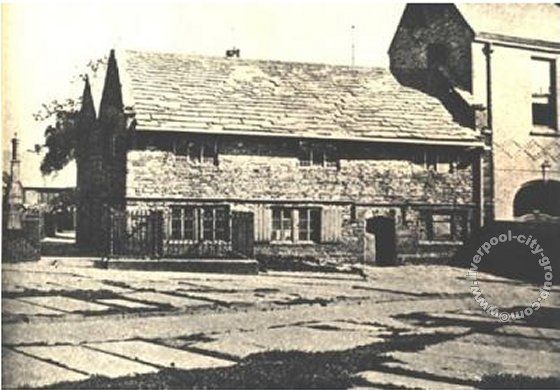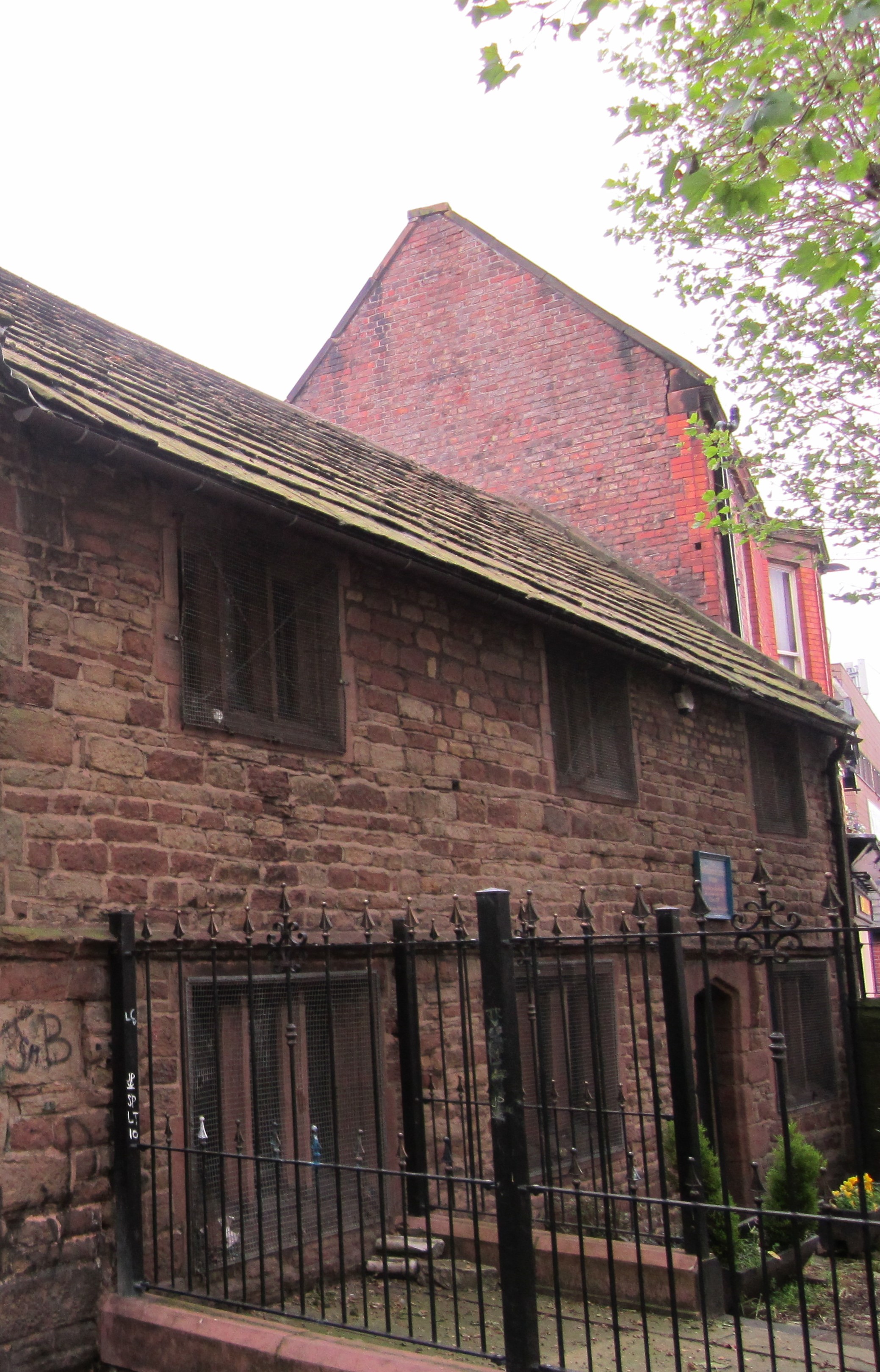The Old Grammar School
History of the School
It is likely that the first school was established in the 1470’s. In his will of 1615 a Thomas Harrison bequeathed £120 for the maintenance of a free school; it seems that the building we have today, dates from then.
The church decided the syllabus, including Latin, Greek, Maths and English to enable pupils to work for the shipping owners of Liverpool. Goronwy Owen, a Welsh clergyman and noted poet, became schoolmaster in 1753 and a house was added to the school. It ceased to be used as a school in 1871, but education has continued on the site – including Sunday school, Bible study groups and, most recently, English classes for our refugee community.
It is unclear when the Grammar School was founded, but it was possibly in the 1470’s when the Molyneux family established the first Chantry in the church.

The Old Grammar School in 1910
Chantries started in the mediaeval period. They were endowed with funds (usually the income from land or properties) to pay a priest to say masses or prayers for the souls of the dead. Once Chantry priests had said the required offices their time was their own – and they often supplemented their income as schoolteachers. When King Henry VIII abolished Chantries, the Acts of 1545 and 1547 provided that the income from them should be diverted to charitable purposes – although in practice much of it ended up in the pockets of Henry’s friends. Edward VI established grammar schools for poor boys in 1548. In that year a Walton document states that “Humphrey Crosse, parson and schoolmaster, must have his wages paid out of Chantry rent”.
The oldest part of the present building was probably erected in 1614 but may be earlier. Goronwy Owen, a Welsh clergyman and noted poet, became schoolmaster in 1753 and a house was added to the school.
A fire in the 1970’s caused extensive damage, but much of the original timberwork survived. The timbers in the upper room indicate that it was once separated into three sections by walls of wattle-and-daub.
The Education Act of 1870 established a system of local ‘school boards’ and the OGS closed the next year. Thereafter the building was used by the church for offices and meeting rooms and also by affiliated groups such as the scouts.
A modern extension at the rear houses a kitchen and toilets. Unfortunately, it is of a design and construction that does not make it suitable for modern use nor does it conform to current building standards.

What we've been upto recently
After the closure of the school in in the 19th century, use of the building passed to St Mary’s Church.
Over the years, it has been used for a variety of church and community activities. This has included:
- Parish office and meeting rooms (including Sunday school, Bible studies, Mothers’ Union, Men’s group) Hosting a scout group
- Receptions after funerals & Baptisms
- Knit & Natter group, Coffee mornings and afternoon teas
- Educational courses (Health & Safety, First Aid etc)
- Events such as Burns Night Dinner, Film nights (with fish & chips), Cheese & wine, Bingo, Quiz nights etc
- Exhibitions of local artists and photography
- History & Heritage days and historical displays
- Pensioners’ Lunch club and Asylum seekers lunches
Why we need your help
- There is no disabled access and no disabled toilet
- The kitchen and toilets are poorly designed and require modernisation
- Lack of soundproofing compromises simultaneous use of different rooms
- There is a lack of proper storage
- Some attention is required for building issues (repointing, damp penetration to corridor ceiling)
Unless these issues are addressed, future use, indeed the future survival, of the building will be compromised. Dealing with this is the first priority.